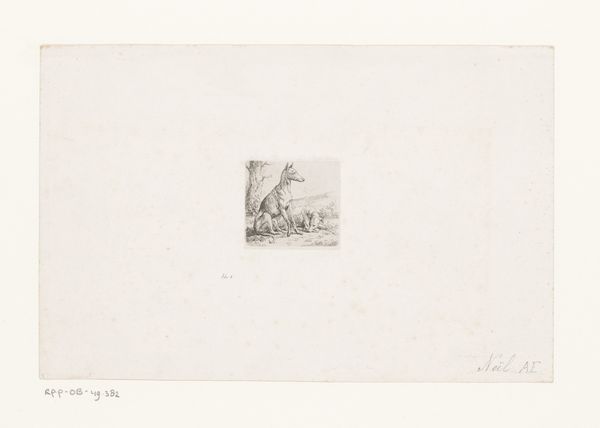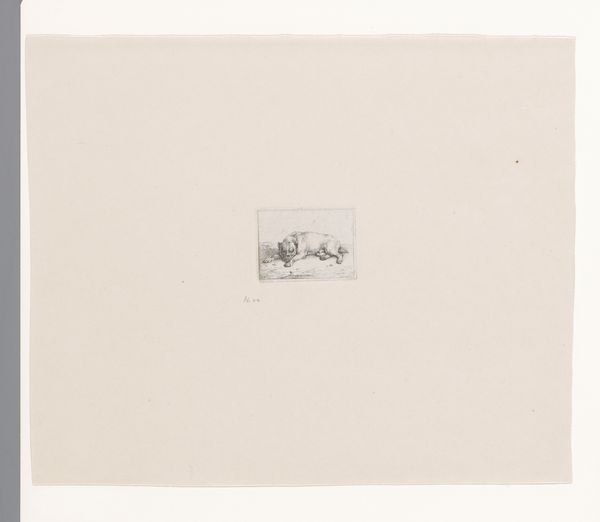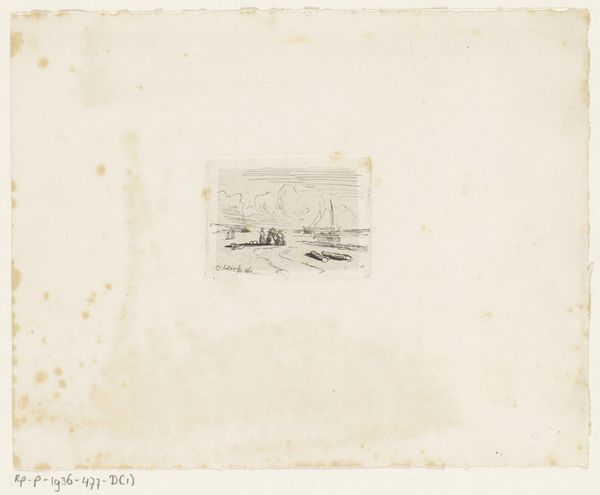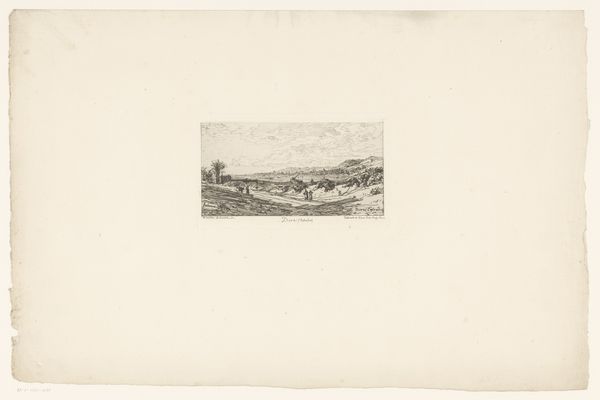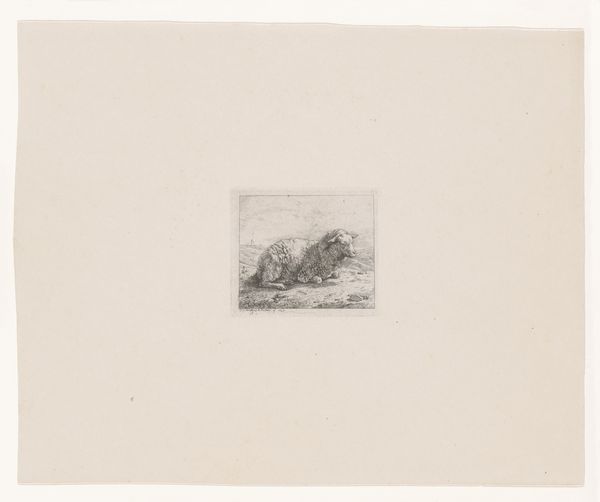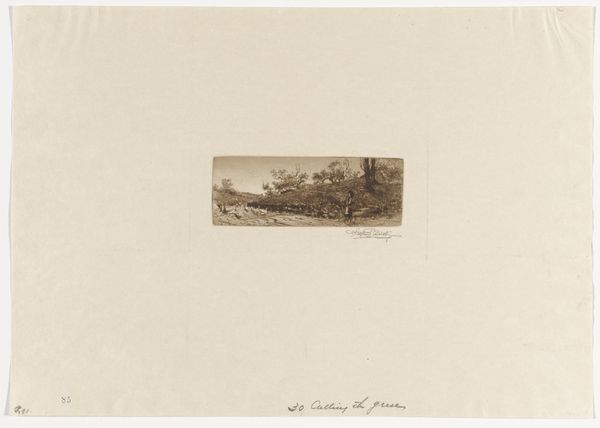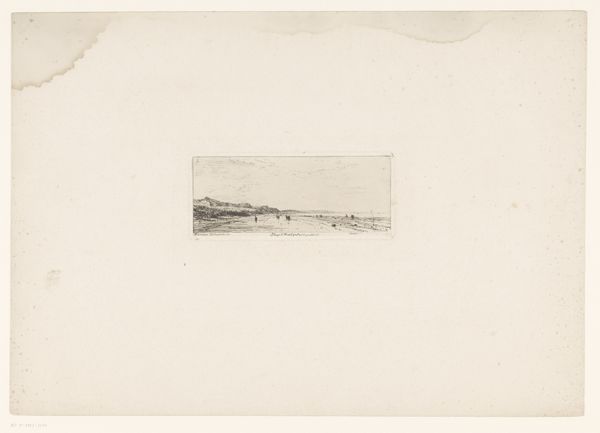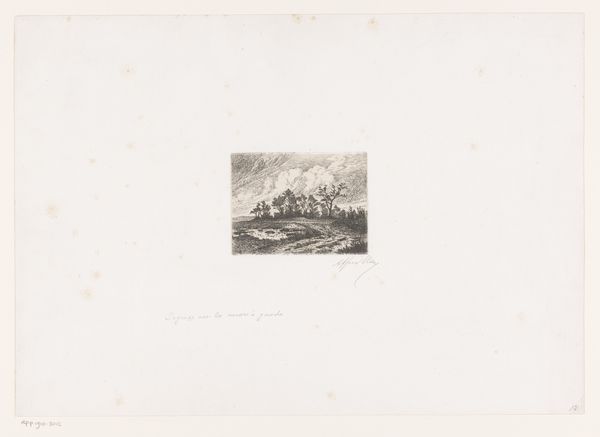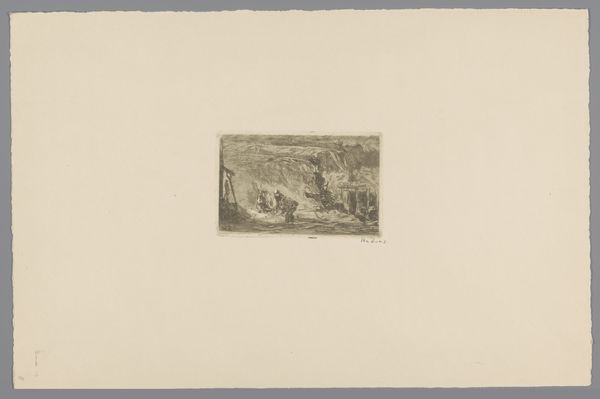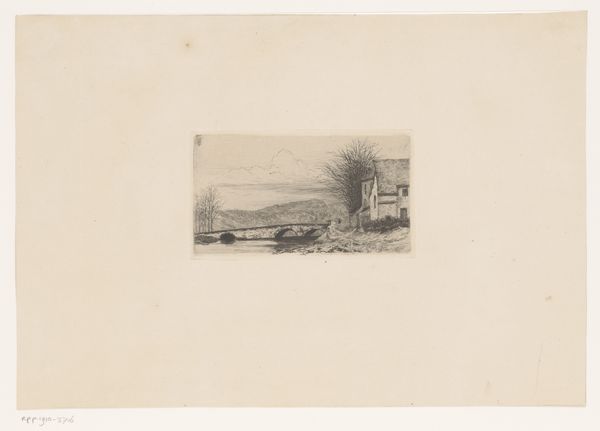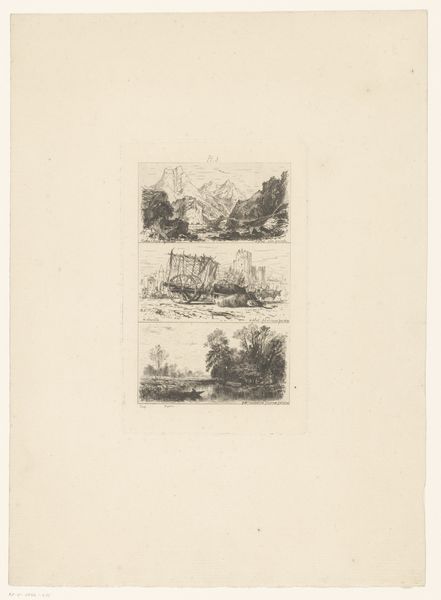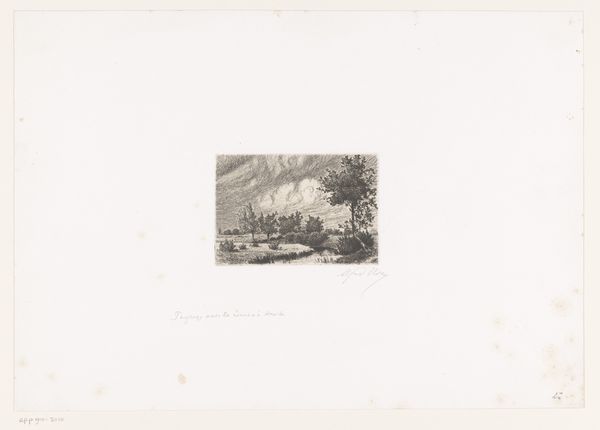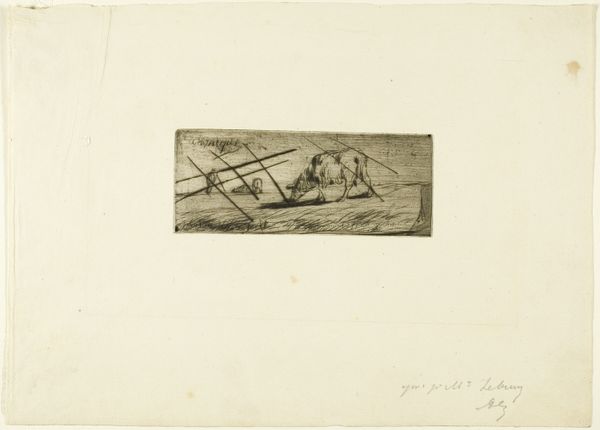
drawing, print, etching, paper, ink
#
drawing
#
ink paper printed
# print
#
etching
#
landscape
#
paper
#
ink
#
genre-painting
#
realism
Dimensions: height 38 mm, width 78 mm
Copyright: Rijks Museum: Open Domain
Curator: This etching by Charles Jacque, dating from 1849, is entitled "Titelprent met een varkenshoeder met toom varkens." That translates to "Title Print with a Swineherd and a Group of Pigs". It's a wonderfully compact genre scene, rendered in ink on paper. Editor: It's fascinating how much information Jacque conveys with such minimal means. The composition itself feels a little precarious. All the elements are bunched together in the center, as though pushing against an invisible frame. Curator: The subject speaks volumes about the era’s fascination with rural life and the idealization of pastoral simplicity. Consider the pig, often laden with negative connotations, elevated here to the focus of the narrative, representing sustenance, prosperity, even belonging within the human-animal relationship. Editor: From a formal perspective, look at the interplay of light and shadow—how the subtle gradations define form and create depth, despite the diminutive scale. The density of the etching lines describes the tactile qualities of the animals' fur and the texture of the landscape. Curator: Yes, it reminds us that genre paintings were important for articulating class distinctions. Pig husbandry connected humans to the soil and shaped distinct cultural identities. It's quite likely to depict specific traditions, maybe around seasonal slaughters or local animal breeds which resonated deeply within 19th century communities. Editor: The horizon line, almost completely effaced, further amplifies the sense of enclosure and concentration. One might say this restriction compels closer scrutiny, revealing more complexity despite initial impressions of its rustic motif. It feels deliberately compressed to enhance a study on close, humble living. Curator: Ultimately, this small etching holds considerable resonance about ways in which people construct ideas about both “civilization” and “wilderness”. It asks us to consider our perceptions regarding domestic animals which persist across cultural landscapes. Editor: Absolutely. And even though confined within a traditional representational mode, the artist employs his technique expertly, revealing volumes in so very little. It's almost a miniature essay in form and narrative contained in this single concentrated scene.
Comments
No comments
Be the first to comment and join the conversation on the ultimate creative platform.
